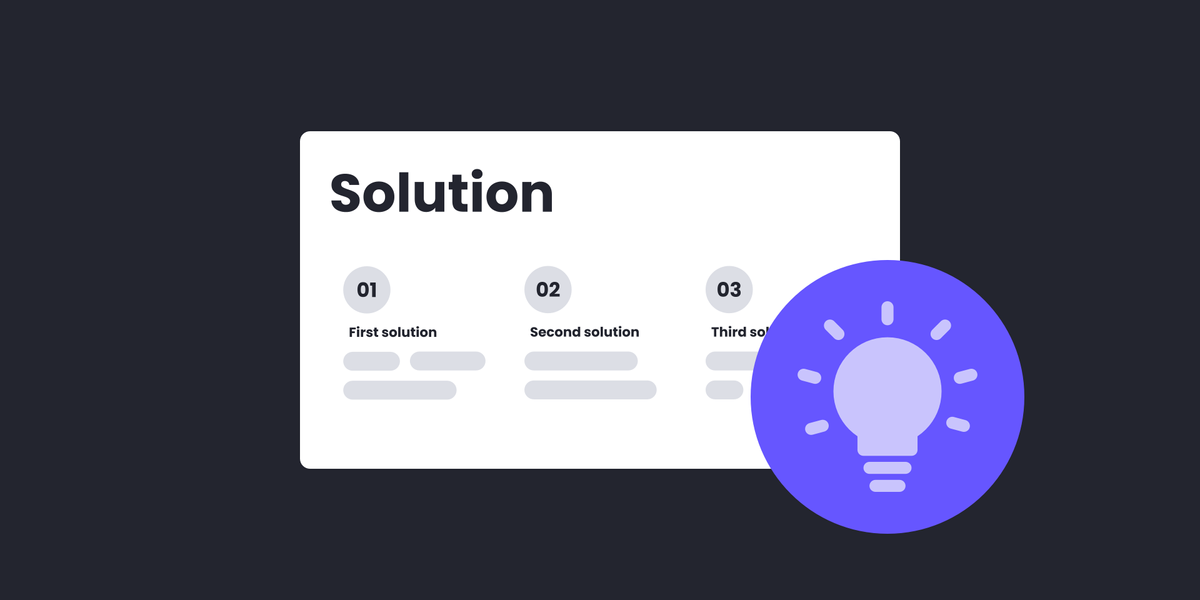What is a Pitch Deck? Top 10 Slides You Need, Tips and Fun Take
A pitch deck is essential for startups to secure funding and effectively communicate your vision. Start crafting yours today to attract investors!
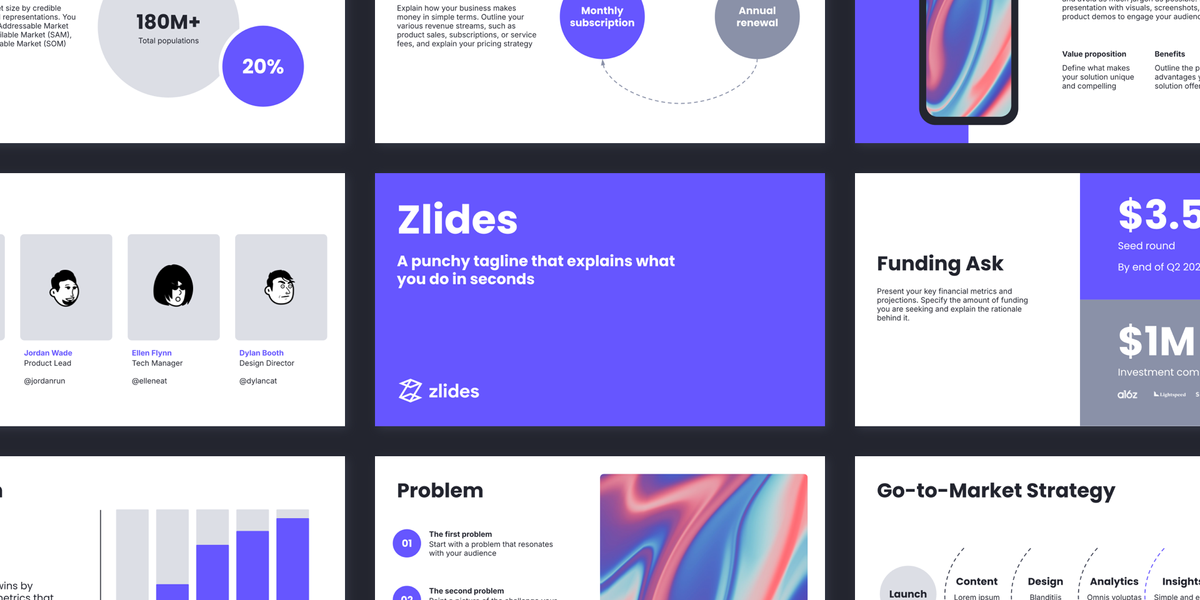
Have you ever tried explaining your brilliant business idea to someone in under 5 minutes? That's exactly what a pitch deck is supposed to do! Think of it as your startup's greatest hits album, packed into 10-15 stunning slides that tell your story and make your audiences want to be part of it.
Why Every Startup Needs a Pitch Deck
The Purpose Behind the Pitch Deck
A pitch deck is your startup's visual storytelling tool that communicates your vision, mission, business plan, and potential to investors. It's like your startup's Instagram stories, showcasing why your idea is worth investing in. Whether you're raising funds, pitching your dream clients, or presenting at a pitch competition, a well-crafted pitch deck is your ticket to success.
Understanding Your Audience
Before diving into pitch deck design, remember that different audiences need to hear different stories. Investors want to see business numbers and potential returns, while clients care about solutions and practical benefits. Your pitch deck should speak directly to your audience's interests and needs.
The Basic Structure of a Pitch Deck
While every pitch deck is crafted uniquely to reflect the specific vision and goals of each startup, they all share common elements that enhance readability. These shared elements ensure that the information is presented clearly and effectively, making it easier for the audience to engage with the content.
Your pitch deck should contain:
- The cover
- The problem
- The solution
- Market size
- Business model
- Go-to-Market strategy
- Traction
- The team
- The competition
- Your ask
Top 10 Must-Have Slides for Your Pitch Deck

Slide 1: The Cover
Your cover slide is like your startup's handshake - make it friendly and memorable! Keep it clean with your company name, logo, and a punchy tagline that explains what you do in seconds. No need to overcomplicate.

Slide 2: Identifying the Problem: Your "Once Upon a Time" Moment
Start with a problem that resonates with your audience. Paint a picture of the challenge your target customers face. Use real examples and statistics to show why this problem is worth solving right now. Demonstrate why this problem is growing and pressing a lot of people or organizations. Remember, if there's no problem, there's no business!
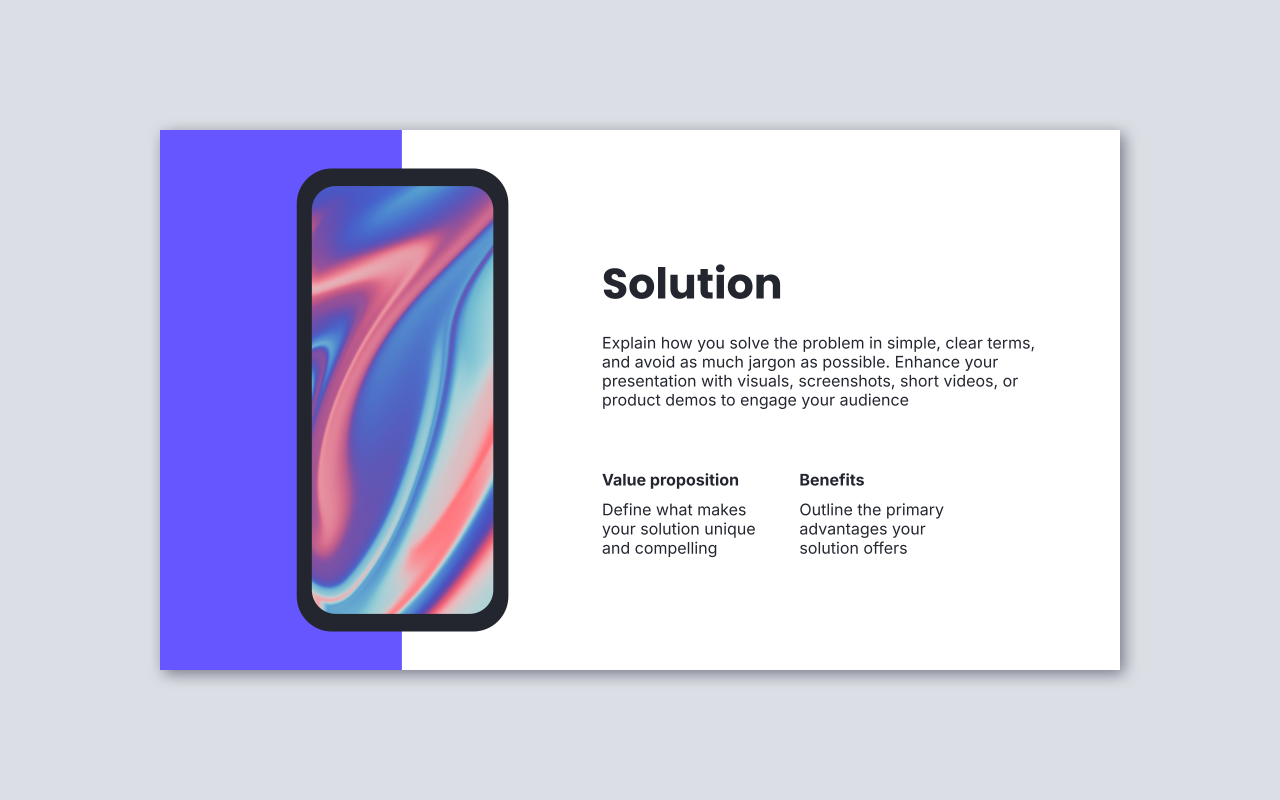
Slide 3: Presenting Your Solution: Your "Ta-Da!" Moment
Here's where you showcase your product or service. Explain how you solve the problem in simple, clear terms, and avoid as much jargon as possible. Enhance your presentation with visuals, screenshots, short videos, or product demos to engage your audience. Emphasize the benefits for your target customers rather than just listing features, ensuring they understand the value you provide.

Slide 4: Market Opportunity: Show the Numbers!
It’s time to show how big your playground is! Break down your market size by credible data sources and visual representations. You can highlight the Total Addressable Market (TAM), Serviceable Available Market (SAM), and Serviceable Obtainable Market (SOM). TAM shows the total revenue opportunity, SAM focuses on your target segment, and SOM reflects the realistic market share you aim to capture. Show why this market is exciting and growing.
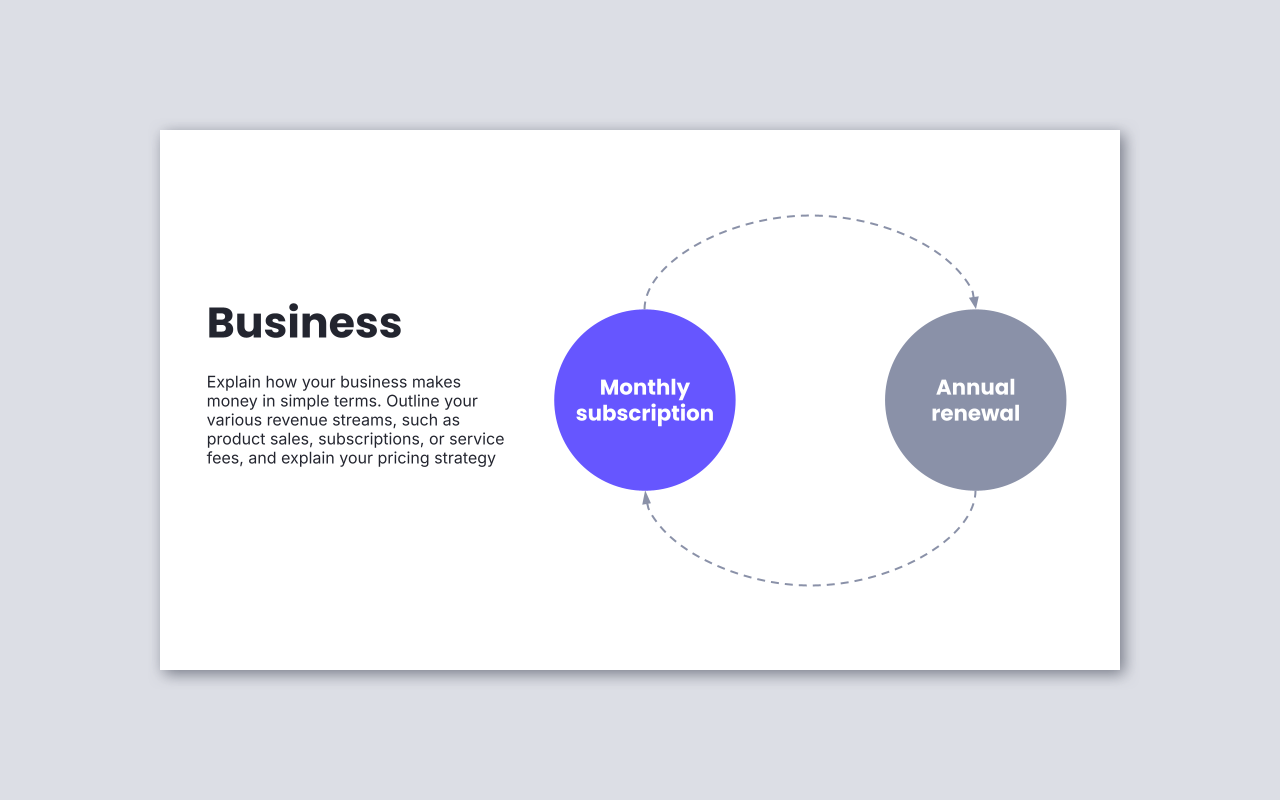
Slide 5: Business Model: How You'll Make It Rain
Explain how your business makes money in simple terms. Outline your various revenue streams, such as product sales, subscriptions, or service fees, and explain your pricing strategy. Make it easy for your audience to understand how you plan to transform your solution into a profitable venture, ensuring transparency and confidence in your financial approach.
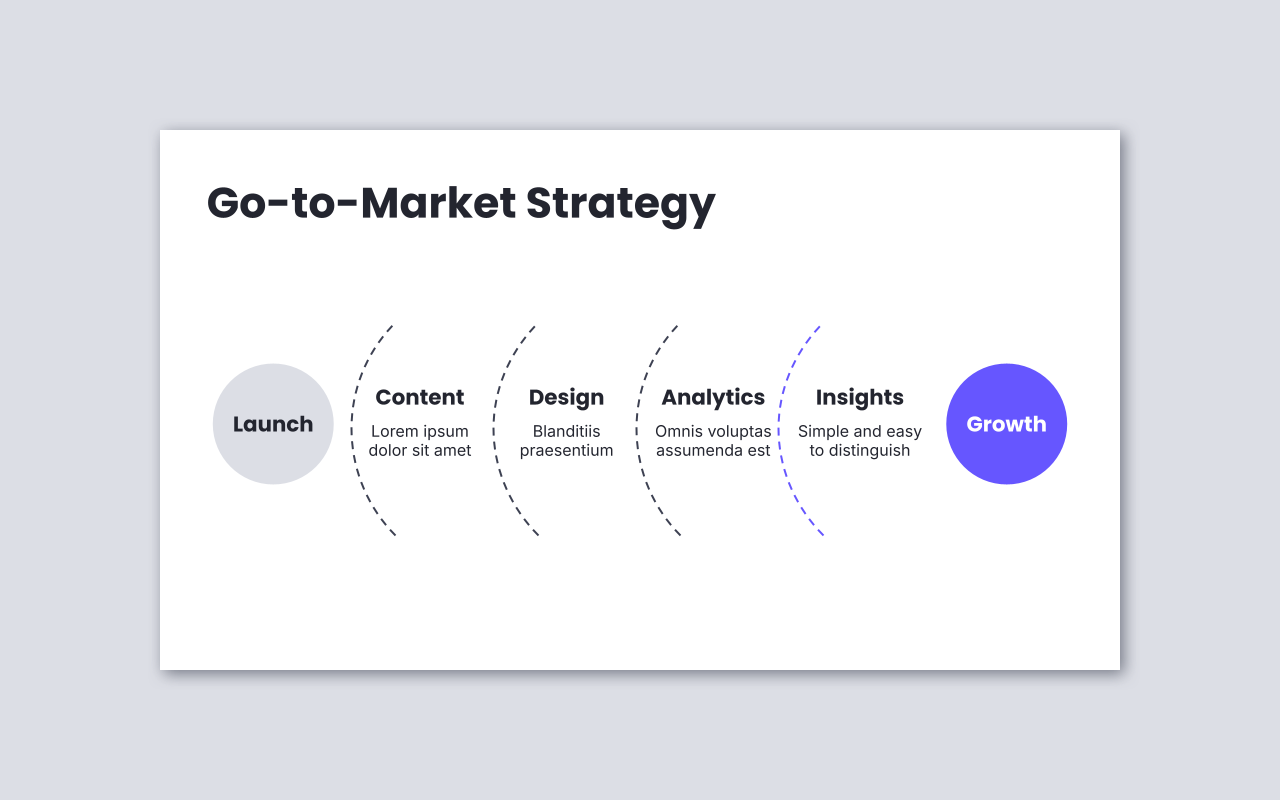
Slide 6: Go-to-Market Strategy: How Do You Get Customers
Outline your plan for reaching and acquiring customers. Describe your marketing strategy, including key channels like social media, campaigns, and content marketing. Additionally, share your sales approach, highlighting methods such as direct outreach and partnerships. Ensure your plan is realistic and emphasizes actionable steps for effective customer engagement and growth.
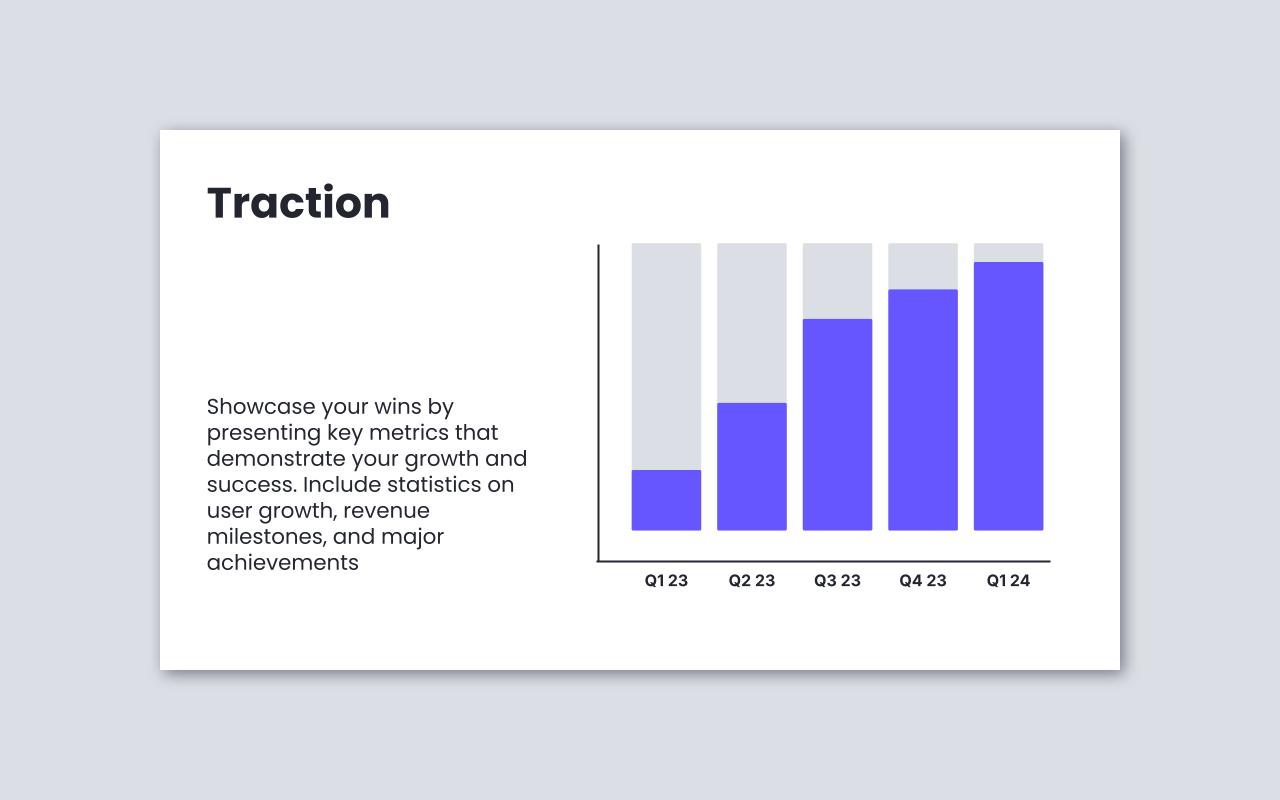
Slide 7: Traction: Growth, Milestones & Engagement Stats
Showcase your wins by presenting key metrics that demonstrate your growth and success. Include statistics on user growth, revenue milestones, and major achievements that highlight your startup. Use graphs and charts to visualize this information effectively. Highlight any strategic partnerships or notable customers that enhance your brand's credibility and reinforce your market traction.
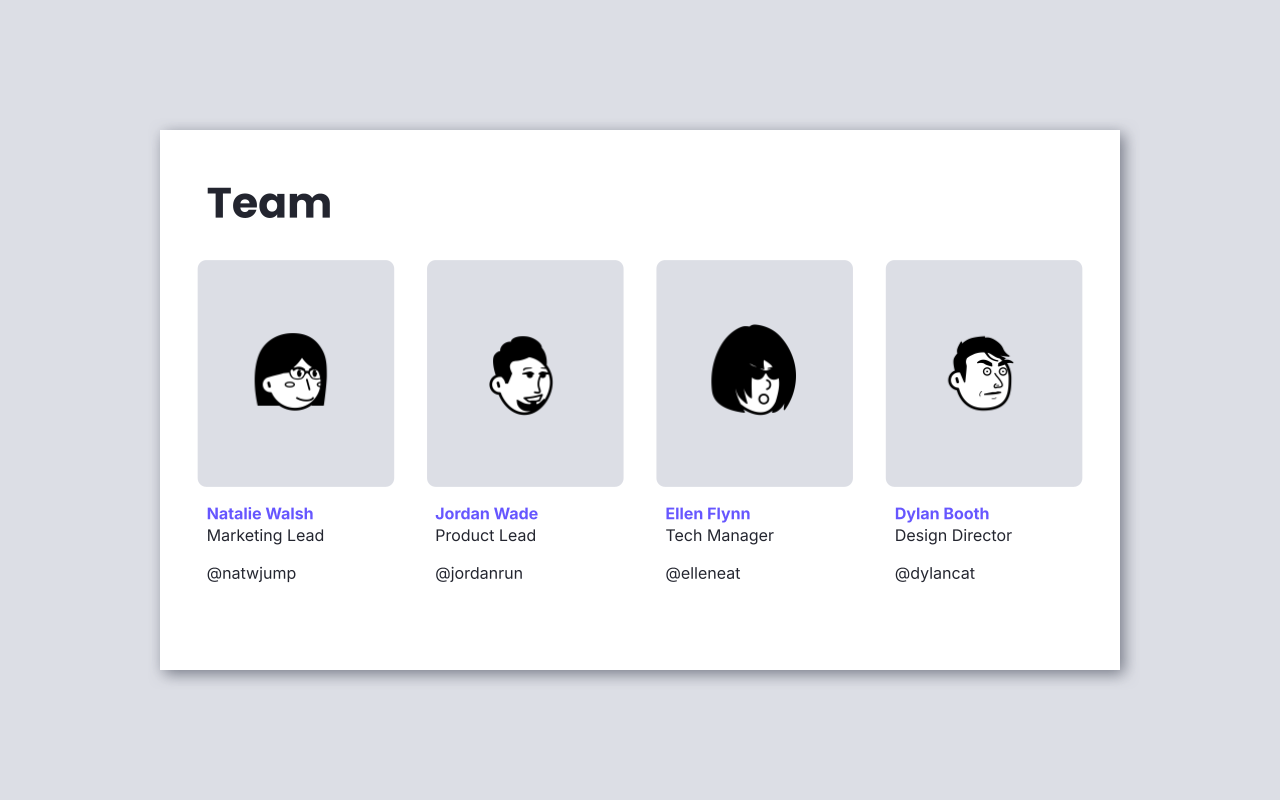
Slide 8: Meet the Dream Team: The Avengers
Introduce your A-team and their superpowers. Focus on relevant experience and accomplishments that make them uniquely qualified to take off your startup. Make sure to include individual expertise that demonstrates why this team is perfectly positioned to execute your goals and drive the success of your business forward.
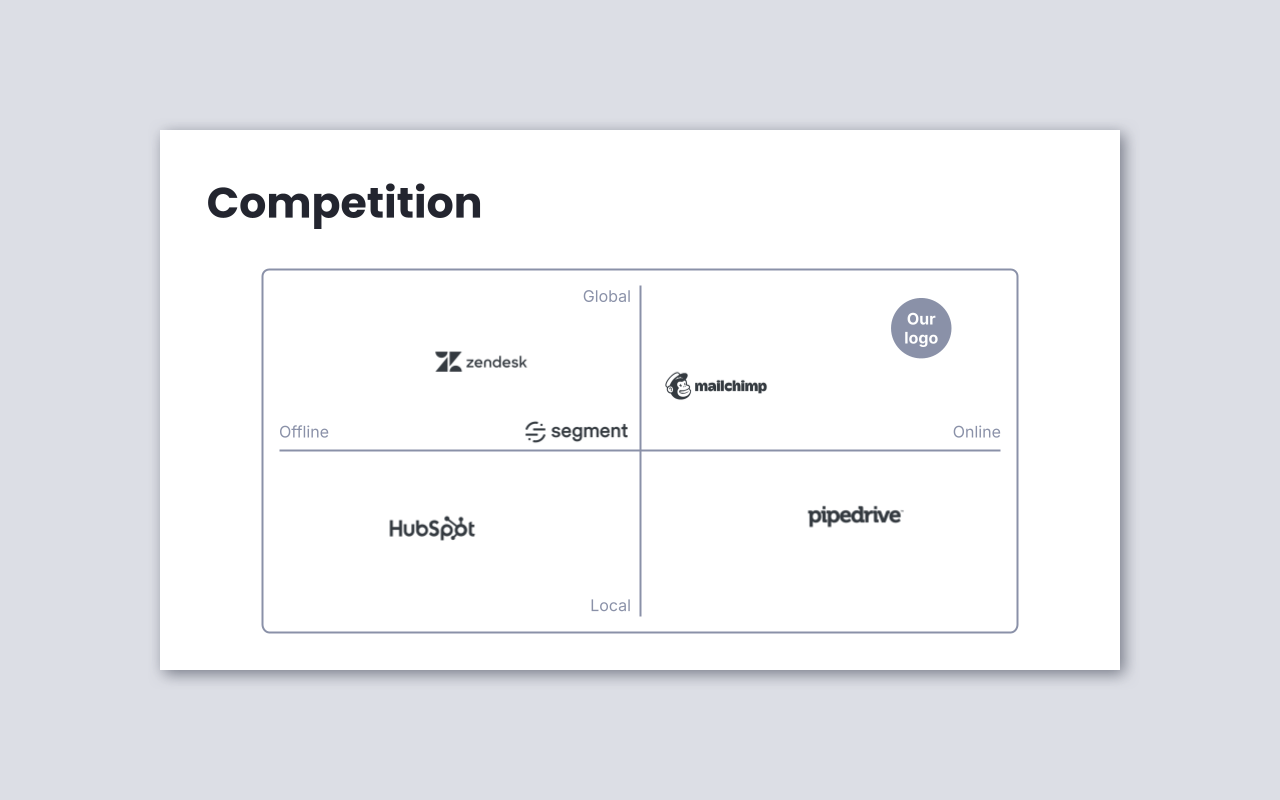
Slide 9: Competitive Landscape: Who's in the Ring?
Analyze your competition honestly and identify key players in your market. Clearly articulate what sets you apart and makes your offering superior. Utilize a straightforward comparison matrix to showcase your advantages, making it easy for stakeholders to understand how you differentiate from competitors and the unique value you provide.
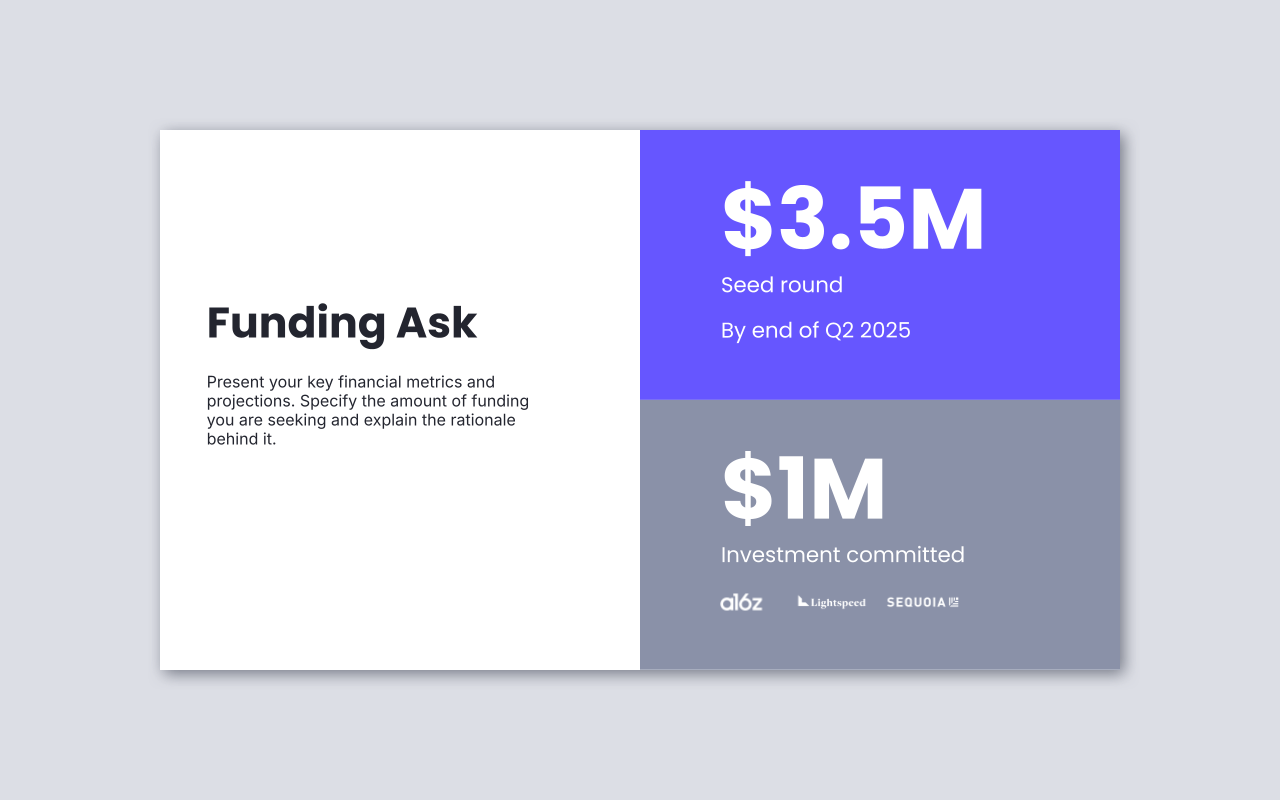
Slide 10: Financial & Funding Ask
Present your key financial metrics and projections. Specify the amount of funding you are seeking and explain the rationale behind it. Detail how you plan to utilize these funds to drive growth and achieve your business objectives effectively.
Tips for Designing an Eye-Catching Pitch Deck
Keep It Simple—Less is More!
The best pitch deck design follows the principle of simplicity. Stick to one to three main points per slide. Make sure your audiences can get your message in seconds.
Visuals That Speak Louder Than Words
Use high-quality images, icons, and graphics. Create clear, easy-to-read charts and diagrams. Remember that visual hierarchy guides your audience's attention.
Design Hacks for Non-Designers
Stick to 2-3 primary and accent colors that match your brand. Use consistent fonts throughout. Leverage pre-made pitch deck templates and design tools to maintain consistency.
Fun Takes on Pitch Decks—Get Creative!
Incorporating Humor and Personality
Don't be afraid to inject some personality into your pitch deck design. Use relevant memes or pop culture references if appropriate. Keep it professional but memorable.
Unique Formats to Stand Out
Consider using creative analogies to explain complex ideas. Try unexpected visual metaphors. Make your presentation format match your brand personality.
Storytelling Magic
Craft a compelling narrative throughout your pitch deck. Ensure smooth transitions between slides to maintain flow, and aim to create an emotional connection with your audience.
Common Mistakes to Avoid When Creating Your Pitch Deck
Overloading Slides with Text
Get rid of overwhelming slides with excessive text. Focus on key points and present information concisely. Use bullet points sparingly to enhance clarity without cluttering your slides, ensuring your message remains impactful and easily digestible.
Presentation Do's and Don'ts
Do maintain consistent branding throughout your presentation. Avoid using fancy animations that can distract from your message. Additionally, proofread all content multiple times to eliminate errors and ensure clarity, maintaining a professional and polished appearance.
Forgetting to Practice Your Delivery
Practice your pitch until it flows naturally. Time your presentation to respect your audience's schedule. Prepare for common questions and objections. Remember, your pitch deck is a tool to start conversations, not end them. Keep it dynamic, keep it engaging, and most importantly, keep it authentic to your startup's story. Happy pitching!
Frequently Asked Questions
What is the purpose of a pitch deck?
A pitch deck is like your startup's highlight reel! It's a brief, visually engaging presentation (usually around 10-15 slides) that you use to quickly explain your idea to potential investors, clients, or partners. Think of it as a way to showcase your vision, the problem you're solving, and why your solution is worth investing in.
What is the difference between a pitch deck and a presentation?
While both involve presenting information, a pitch deck is much more focused and concise than a general presentation. A typical presentation might cover a wide range of topics, whereas a pitch deck is specifically designed to "sell" your startup idea. It tells a compelling story, highlights key metrics, and focuses on getting the audience excited about your startup's potential.
How long should a pitch deck be?
Aim for brevity! A good pitch deck typically ranges from 10 to 15 slides. You want to provide enough information to draw interest without overwhelming your audience. Remember, the goal is to spark a conversation, not to deliver an exhaustive report.
Let’s Build an Amazing Pitch Deck Together!
Understanding what is a pitch deck is essential for every founder and startup, no matter where you are on your journey. A well-crafted pitch deck isn’t just a slideshow. It’s your chance to tell your story, showcase your vision, and open doors to new opportunities. Whether you’re seeking investment, partners, or your next big client, your pitch deck is the key to making a memorable first impression.
Ready to take the next step? Start designing your own standout presentation with a pitch deck template. It’s a simple way to bring your ideas to life and set your startup up for success. Your story deserves to be heard!

Get a Professional Pitch Deck and Tell Compelling Stories
✓ Unique layouts ✓ Editable elements ✓ Free vector icons ✓ Compatible with Google Slides
Download now →Related Posts

